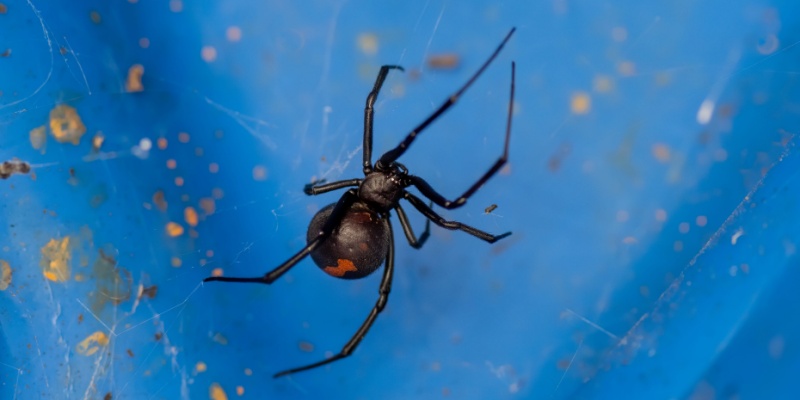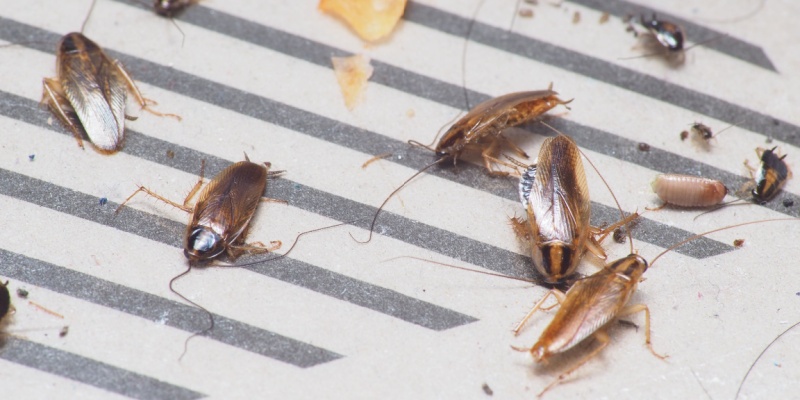Not every spider sighting calls for concern—but some deserve a closer look. In Indianapolis, seasonal shifts often invite these eight-legged wanderers indoors, where they quietly settle into attics, basements, and forgotten corners. While many spiders are harmless and even helpful in keeping other pests in check, a few species carry venom that can pose real health risks.
Recognizing the difference between a harmless house spider and one that could send you to urgent care is essential—and knowing when to consider spider control in Indianapolis can help you stay ahead of the problem before it creeps any further.
The Truth About Dangerous Spiders in Indianapolis
The majority of spiders in Indianapolis are not aggressive and rarely bite humans. However, there are two venomous spiders in Indianapolis that homeowners should be aware of: the brown recluse and the black widow. These species are not only capable of biting but can also cause serious medical issues if left untreated.
Brown Recluse Spider
- Appearance: Light to dark brown with a distinct violin-shaped marking on its back
- Habitat: Prefers dark, undisturbed areas like basements, attics, closets, and behind furniture
- Bite Symptoms: Pain, redness, blistering, and in severe cases, necrosis (tissue death)
The brown recluse spider in Indianapolis is elusive and often goes unnoticed until a bite occurs. While not all bites are serious, some can lead to significant skin damage and require medical attention.
Black Widow Spider
- Appearance: Glossy black with a red hourglass marking on the underside of the abdomen
- Habitat: Found in garages, sheds, woodpiles, and crawl spaces
- Bite Symptoms: Muscle cramps, nausea, difficulty breathing, and intense pain
Black widow spiders in Indianapolis are more likely to bite when disturbed. Their venom affects the nervous system and can be particularly dangerous for children and the elderly.
How to Identify Dangerous Spiders
Spotting a dangerous spider isn’t always easy, especially since many harmless species mimic the appearance of venomous ones. Here are a few signs to watch for:
- Unusual markings (violin shape or hourglass)
- Solitary behavior in hidden, undisturbed areas
- Webs that are irregular and messy (not the classic orb shape)
- Sudden appearance of skin irritation or unexplained bites
- Spiders that retreat quickly when exposed to light or movement
That last behavior—quick retreating—can be common among venomous spiders like the brown recluse, which prefer to stay hidden and avoid confrontation. If you notice these traits, it’s best to avoid contact and consult a professional for proper identification and removal.
Why Spiders Choose Indiana Homes for Shelter
Spiders don’t enter homes randomly—they follow opportunity. In Indianapolis, seasonal changes like cooler fall temperatures or heavy summer rains often drive spiders indoors in search of warmth, shelter, and food. Homes with abundant insect activity, cluttered storage areas, or easy access points like cracks and gaps become prime real estate for these eight-legged squatters.
Basements, attics, garages, and crawl spaces offer the quiet, undisturbed environments many species prefer. Even outdoor lighting can attract insects, which in turn draws spiders closer to entryways. Understanding what lures them in is the first step toward keeping them out—and reinforces the importance of proactive spider control before they settle in for good.
Poisonous Spiders in Indiana Homes: What to Do
While poisonous spiders in Indiana homes are relatively rare, their presence can be unsettling. Prevention is key:
- Seal cracks and gaps around windows, doors, and foundations
- Keep storage areas clean and clutter-free
- Shake out clothing, shoes, and towels before use
- Use yellow light bulbs outdoors to reduce insect attraction
- Store firewood away from the home and off the ground
- Vacuum regularly in corners, under furniture, and behind appliances
- Install door sweeps and window screens to block entry points
These simple steps can dramatically reduce the chances of encountering venomous spiders like the brown recluse or black widow. More importantly, they help create a home environment that’s less inviting to all types of pests. If you’ve already noticed signs of spider activity or experienced spider bites in Indianapolis, it’s time to act before the situation escalates.
Finding Peace of Mind in a Spider-Friendly City
Spiders are a natural part of Indiana’s ecosystem, but that doesn’t mean they belong inside your home. As the seasons shift and conditions change, it’s important to stay aware of what attracts them indoors—from moisture and clutter to the presence of other insects. By understanding their behavior and identifying the few dangerous species that pose health risks, homeowners in Indianapolis can take meaningful steps to protect their families and living spaces.
Whether it’s sealing entry points, reducing outdoor lighting, or simply shaking out your shoes before wearing them, small habits can make a big difference. And when signs of spider activity become more than just occasional sightings, knowing when to seek professional help ensures peace of mind. Spider control isn’t just about eliminating pests—it’s about reclaiming your space and feeling safe in it.
Need Help? Trio Pest Control Is Here for You
If you’re ready to take that next step, Trio Pest Control offers expert spider inspections and treatments tailored to Indianapolis homes. Our licensed technicians know what to look for and how to respond—whether you’re dealing with brown recluse spiders, black widows, or just want to prevent future infestations. Let us help you keep your home secure, comfortable, and spider-free.
Reach out to Trio Pest Control—because waiting gives spiders more time to move in.


